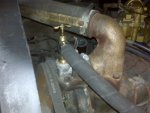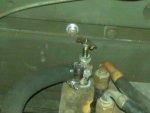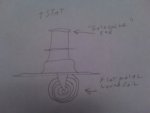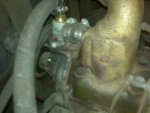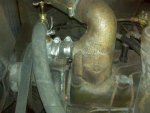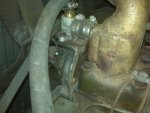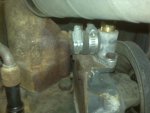Ok
what really is the difference between a 160 and 180 degree
thermostat-besides the obvious temp rating/opening/closing
If running a water heater-Can you run a 160 tstat?
will it be "warm enough"?
is the reason the tm calls for a 180 tstat with the heater so it generates more heat?
Has anyone run a 160 with a heater? how did it work? good enough, not well etc-
how about a 180 vs 160 tstat in the summer?
Reason I'm asking is: I'm pretty sure I have a 160 in my truck only because it never really gets "hot" no matter how long it runs-gauge it self barely moves (bad maybe) it has descent flow in radiator but nothing like I think it should be- it's more of a very slow steady flow not very turbulent like I expected, but the heat at the distribution box is more like "slightly warm air" no good for chilly driving-and oddly enough- although all lines (feeds and returns) get hot -there is no pressure........ so my guess is probably a bad tstat
not sure what to replace it with- I haven't really found much info in the tms or here on the site regarding the 160/180 tstats and heaters vs. summer/winter etc
what really is the difference between a 160 and 180 degree
thermostat-besides the obvious temp rating/opening/closing
If running a water heater-Can you run a 160 tstat?
will it be "warm enough"?
is the reason the tm calls for a 180 tstat with the heater so it generates more heat?
Has anyone run a 160 with a heater? how did it work? good enough, not well etc-
how about a 180 vs 160 tstat in the summer?
Reason I'm asking is: I'm pretty sure I have a 160 in my truck only because it never really gets "hot" no matter how long it runs-gauge it self barely moves (bad maybe) it has descent flow in radiator but nothing like I think it should be- it's more of a very slow steady flow not very turbulent like I expected, but the heat at the distribution box is more like "slightly warm air" no good for chilly driving-and oddly enough- although all lines (feeds and returns) get hot -there is no pressure........ so my guess is probably a bad tstat
not sure what to replace it with- I haven't really found much info in the tms or here on the site regarding the 160/180 tstats and heaters vs. summer/winter etc



